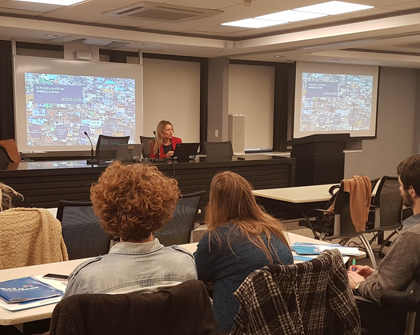The COSIPLAN Project Portfolio[1] is a set of infrastructure works that will have a significant impact on integration and socio-economic development in the region. The portfolio is made up of transportation, energy, and communications projects that promote regional connectivity and generate sustainable social and economic development for South America. The region is divided into Integration and Development Hubs in order to organize the project portfolio.
This portfolio is reviewed and updated annually by the countries of South America, which have been working together towards the sustainable development of physical integration in the region since the year 2000. It is COSIPLAN’s main tool for planning and implementing regional physical integration. The composition of the portfolio as of December 2015 is as follows:[2]
The financing mechanism the countries have chosen mostly uses public sector funds (63% of the estimated investment), with the remainder divided between the private sector (19%), and public–private partnerships (18%). The role of the public sector is even more evident in terms of project numbers: the financing for 81% of projects is public, 12% is private, and 7% public–private.
About 40% of the works currently at the implementation stage are being financed by national treasuries. This is proof of the commitment of the countries in question to regional physical integration.
Private initiatives provide funding for 24% of the portfolio projects currently being implemented.
Type of financing:
In number of projects and millions of US$

Transportation projects are largely financed by the public sector, while energy integration works are split between public sector financing and public-private partnerships. The communications sector is financed by the public sector.
Type of financing by sector
In % of projects
The top ten projects in terms of estimated investment
The top ten projects in terms of estimated investment account for 42.5% of the estimated total investment for the active COSIPLAN portfolio.
The top ten projects in order of estimated investment
Of the ten projects mentioned here, it is important to highlight that seven are hydroelectric power stations or rail connections, which suggests that these types of works require the greatest investment.
The other three projects are the enlargement of an airport, an integrated coastal protection plan, and the construction of a ring road.
There follows a more detailed description of the three projects in which the greatest estimated investment is being made.
Of the 593 projects in the COSIPLAN portfolio, the Madeira River Hydroelectric Power Complex (Santo Antônio and Jirau Hydroelectric Power Stations) is the project in which the largest amount is invested: US$ 18.21 billion. This new hydroelectric power complex in Brazil encompasses the construction of two hydroelectric power stations which will use the water resources of the Madeira River so as to diversify the region’s energy matrix. Its financing comes from the BNDES (Brazilian Development Bank) and a consortium of private banks. It is at an advanced stage of implementation, and work is expected to be completed by October 2016.
Ecuador’s Electric Freight Train is a project that was added to the portfolio during the latest update of projects in the Andean Hub. It is at the profile stage and involves the implementation of an electric railway network for cargo transportation which will connect Ecuador’s current and future production centers with ports on the Pacific Ocean and the country’s border crossings with Peru and Colombia.
The Railway Project between Los Andes (Chile) and Mendoza (Argentina) (Central Trans-Andean Railway) is a project with private financing which is at the pre-implementation stage. It involves the construction of a railway across the Andes which would connect Luján de Cuyo, in the Province of Mendoza, Argentina, with the town of Los Andes in Chile’s Region V, to enable the sustainable transportation of cargo between Chile and the MERCOSUR countries.
[1] The South American Infrastructure and Planning Council (COSIPLAN) is a work area for political and strategic dialog, through consultation, evaluation, cooperation, planning and coordination of efforts, and the articulation of programs and projects to implement the integration of regional infrastructure in member countries of the Union of South American Nations (UNASUR).
[2] See COSIPLAN Project Portfolio 2015 (in Spanish). Buenos Aires, December 2015.







